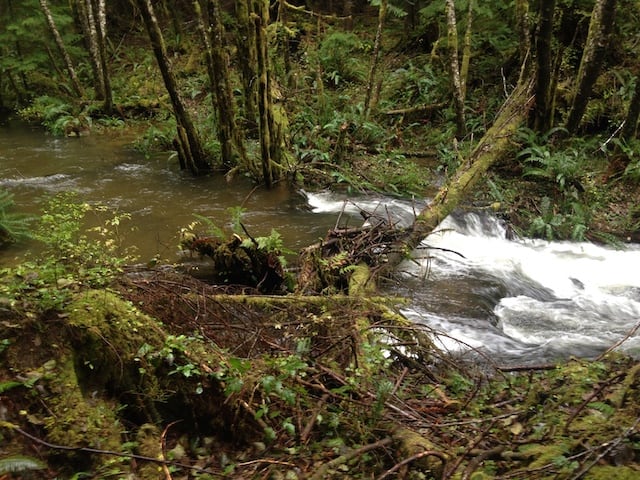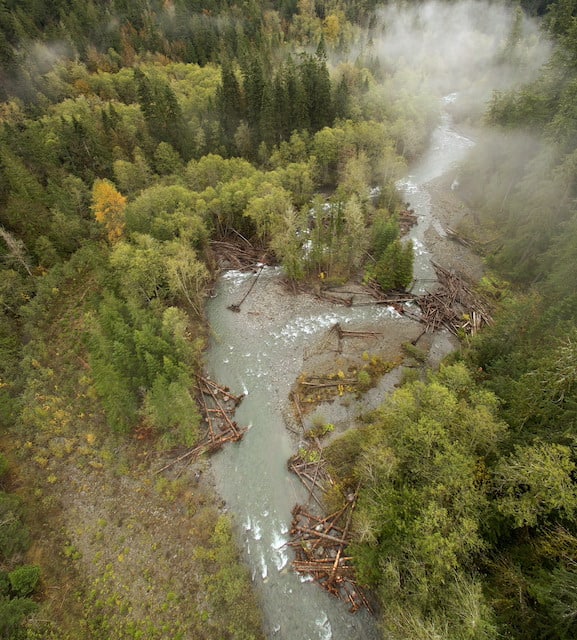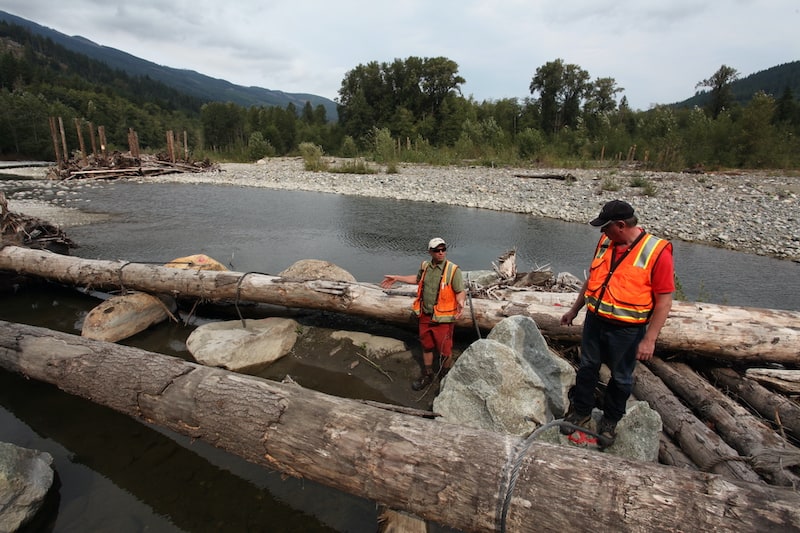
Research within the past 30 years has resoundingly described the benefits of wood within streams and rivers and the impacts wood removal has had throughout human history. This has led to wood being used as a primary tool for stream and river restoration in many watersheds and also being incorporated into bank protection projects. NSD’s leadership in this field began with Tim Abbe’s doctoral research into the role of wood in large river systems and the implementation of the first engineered logjams (ELJs) on the North Fork Stillaguamish in 1999. We have continued this leadership through helping author the National Large Wood Manual (USBR and ERDC, 2016) in collaboration with the Bureau of Reclamation and the U.S. Army Corps of Engineers and developing risk assessment tools that have been incorporated into State and regional design guidelines. This involvement in logjam design has led to NSD’s involvement in countless logjam projects and assistance with multiple construction projects on any given year. Our logjam design utilizes a myriad of stabilizing elements from buried posts, driven and batter piles, boulder ballast, and natural entanglement with existing trees and can be built using traditional heavy construction equipment or even hand crews utilizing winch and cable systems.
Our approach to wood and logjam design is tailored to every project and the overall project goals and risk. For instance, in small streams with low risk we often recommend very simple, low-tech, low-cost solutions to implement wood restoration strategies; whereas in large rivers with high risk we advocate for more sophisticated analysis techniques and modeling to ensure the project performs as intended and there are no adverse impacts. We are also adept at developing implementable designs in rugged and remote areas using heavy lift helicopters and skyline cable construction. Both methods are ideal for the precise placement of large wood in remote or roadless reaches. This allows for a considerable reduction in impacts associated with walking traditional tracked equipment to the construction site and also greatly expedites the speed of construction.




